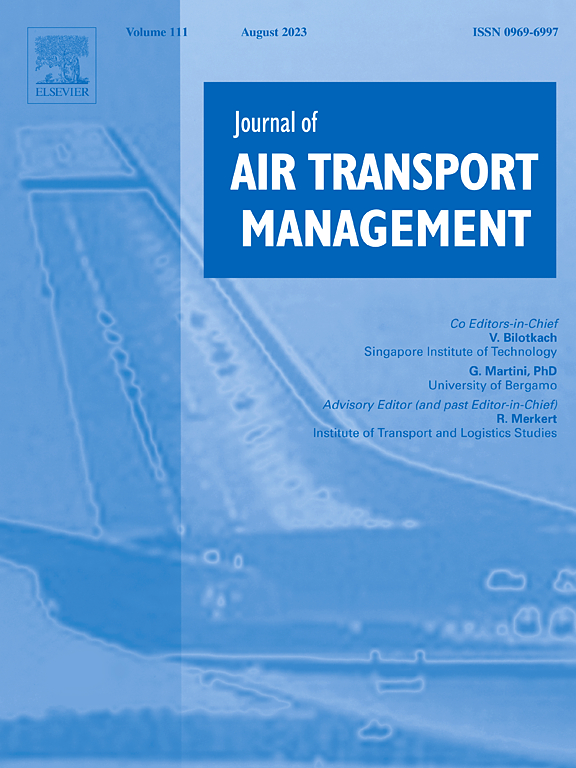Optimization and evolution of UAV insurance provision framework: Insights into multi-sector cooperation
IF 3.6
2区 工程技术
Q2 TRANSPORTATION
引用次数: 0
Abstract
The rapid expansion of unmanned aerial vehicles (UAVs) presents considerable challenges in risk management. Although insurance is essential for mitigating the risks associated with UAV operations, aviation insurers face major obstacles in providing effective coverage due to insufficient actuarial data, limited expertise, and regulatory uncertainties. This study aims to optimize the UAV insurance provision framework to help address the issue of inefficient coverage. Through a comparative analysis of traditional and cooperative UAV insurance provision frameworks, the study identifies multi-sector cooperation as the most effective approach. This framework involves close cooperation among aviation insurers, the government, and UAV manufacturers. To examine the stability of this framework, an evolutionary game theory model is developed, with aviation insurers and the government as the main players. Factors such as cooperative profits, cooperative costs, and the benefits of free-riding are identified as pivotal to the framework's stability. The system's sensitivity to variations in these factors is demonstrated through simulations. The study also outlines a potential evolutionary path for the UAV insurance provision framework, emphasizing a phased approach that adapts to the evolving UAV landscape. This research offers valuable insights into optimizing UAV insurance provision and provides practical guidance for aviation insurers, policymakers, and UAV manufacturers in fostering cooperative strategies that enhance the overall safety and sustainability of UAV operations.
无人机保险提供框架的优化与演进:基于多部门合作的洞察
无人机的快速发展给风险管理带来了巨大的挑战。尽管保险对于减轻与无人机操作相关的风险至关重要,但由于精算数据不足、专业知识有限和监管不确定性,航空保险公司在提供有效保险方面面临主要障碍。本研究旨在优化无人机保险提供框架,以帮助解决覆盖效率低下的问题。通过对传统和合作无人机保险提供框架的比较分析,该研究确定多部门合作是最有效的方法。该框架涉及航空保险公司、政府和无人机制造商之间的密切合作。为了检验这一框架的稳定性,本文建立了以航空保险公司和政府为主要参与者的进化博弈论模型。合作利润、合作成本和搭便车的好处等因素被认为是框架稳定性的关键。通过仿真验证了系统对这些因素变化的敏感性。该研究还概述了无人机保险提供框架的潜在进化路径,强调了适应不断发展的无人机景观的分阶段方法。该研究为优化无人机保险提供了有价值的见解,并为航空保险公司、政策制定者和无人机制造商提供了实践指导,以促进合作战略,提高无人机运营的整体安全性和可持续性。
本文章由计算机程序翻译,如有差异,请以英文原文为准。
求助全文
约1分钟内获得全文
求助全文
来源期刊

Journal of Air Transport Management
TRANSPORTATION-
CiteScore
12.40
自引率
11.70%
发文量
97
期刊介绍:
The Journal of Air Transport Management (JATM) sets out to address, through high quality research articles and authoritative commentary, the major economic, management and policy issues facing the air transport industry today. It offers practitioners and academics an international and dynamic forum for analysis and discussion of these issues, linking research and practice and stimulating interaction between the two. The refereed papers in the journal cover all the major sectors of the industry (airlines, airports, air traffic management) as well as related areas such as tourism management and logistics. Papers are blind reviewed, normally by two referees, chosen for their specialist knowledge. The journal provides independent, original and rigorous analysis in the areas of: • Policy, regulation and law • Strategy • Operations • Marketing • Economics and finance • Sustainability
 求助内容:
求助内容: 应助结果提醒方式:
应助结果提醒方式:


